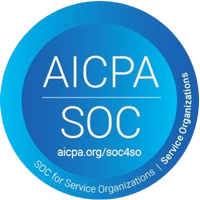7 Ways to Address the Nursing Shortage
Healthcare employment rates are on the rise, according to the U.S. Bureau of Labor Statistics (BLS). But while hiring in the United States is increasing, so is an issue industry professionals have been battling for years: the nationwide nursing shortage.
Understanding the Nursing Shortage
Nursing is one of the fastest-growing occupations in the United States, with the profession representing nearly 50% of jobs in the healthcare system. The nursing workforce is predicted to grow from 3 million in 2019 to 3.3 million in 2029. Registered Nurses (RNs) alone are among BLS’s top occupations for job growth through 2029.
Due to a rapidly aging population of over 70 million Baby Boomers, the high demand for nurse faculty is likely to continue rising. As the population ages, there will be more need for care staff, both for those who age in facilities and at home. Between nurse staffing shortages and growing demand from patients who need space in long-term care facilities, healthcare recruiters are facing a perfect storm.
The nursing shortage is further complicated by the large number of nurses now retiring from the workforce. According to the BLS, nearly 176,000 new healthcare jobs will open each year as Baby Boomer nurses reach retirement. A total of one million nurses are expected to leave the workforce by 2030. Clearly, the rising demand for nurses will place a major strain on the current workforce.
The American Association of Colleges of Nursing reported only a 5% increase in enrollment for nursing programs in 2019. Given that number, it’s safe to say the new generation of nurses will be insufficient to keep up with the rapidly increasing senior population. For CNAs, concerns about a lack of career path, insufficient wages, and protection during COVID-19 have only made things worse. These concerns, along with others, have notably increased the nursing shortage in the past year.
7 Solutions to Solve the Nursing Shortage
Faced with a limited supply of talent in the current nursing workforce, healthcare facilities need to be able to source and attract candidates while staying competitive as employers.
Here are a few strategies to help you combat the nursing shortage.
1. Improve and Simplify Your Hiring Process
The average time-to-hire for the healthcare industry is about 49 days, according to data from DHI Group. That being said, recruitment tech platforms can drastically reduce days-to-hire (from over a month to under a week) through intuitive, applicant-friendly solutions. Recruiters can use these tools to screen, interview, move candidates seamlessly through applications, and make hires as soon as possible.
Apploi has invested heavily in helping healthcare organizations solve the nursing shortage by developing new solutions for healthcare recruitment and onboarding.
An effective applicant tracking platform will help you:
- Publish job posts across a wide range of job boards and social sites so candidates can easily find, share, and apply for career opportunities.
- Simplify the application process and cut out complicated paperwork so you don’t lose talent along the way.
- Automatically schedule interviews and create offer letters and onboarding packets for a more efficient hiring process.
- Validate licenses and credentials quickly so you can send your offer ahead of the competition.
2. Use Data to Drive Hiring Decisions
Effective recruiting isn’t just about technology. It also involves using data to better understand the market in your area and make strategic hiring decisions.
Data-driven decisions allow your team members to determine if your recruiting methods are effective. With that information, you can target ideal candidates even when they’re in short supply.
Prioritize data-gathering techniques at every step of your recruitment process, from job post-publication to onboarding. These should include tracking workforce trends, job search referral sources, your job post performance, and candidate conversion rates.
Use follow-ups and surveys to get feedback about your recruiting methods from interviewees and new hires. These strategies can also help you gain insight into why candidates picked your facility over another, so you go into the next round of hiring better prepared. For applicants who decided against accepting a job offer, consider a post-interview check-in, so you can ask why they made their choice and what they thought of your hiring process.
3. Set Up a Thorough Onboarding Process
An excellent onboarding process can help you make sure that your nurses have everything they need to succeed on their first day on the job. Thorough onboarding includes everything from license and credential verification. It also means providing your nurses specific on-site information that can ease your nurses’ transitions into a new role and new facility. When nurses are onboarded swiftly and effectively, it can decrease turnover in the long-run.
It’s easy for onboarding to get chaotic when you’re creating materials on your own. Use software to collect materials and ensure that facilities are synced on compliance and orientation information. Digital onboarding can also help prevent the dreaded no-show, and increase employee engagement from day 0.
Learn more about better onboarding
4. Implement a Mentorship Program
According to the Society for Human Resources Management, one of the top five stressors for workers is a lack of growth opportunities. Mentorship, when paired with clear career paths, can be a great way to support nurses. Not only can mentors provide professional support and advice, they can also model careers for nurses, CNAs, and non-clinical staff who want to grow their roles and duties.
In addition, mentorship can help ease the burdens of the nursing shortage by creating strong relationships between staff. A whopping 70% of employees say that the most important part of a healthy working life is workplace friendships. Over half (58%) say that they prioritize getting along with coworkers over a higher paying position. You can’t force friendship, but a mentorship program can create an infrastructure where healthy workplace friendships can thrive.
Remember, mentorship is not a cure-all. Creating a mentorship program won’t be as effective if your staff isn’t satisfied with their work lives. It can even be discouraging if mentors leave their jobs. Make sure your mentors are invested, and offer incentives for those who put in the time and effort to be an excellent mentor.
Learn more about mentorship in healthcare
5. Reward Nurses for Referrals
An employee referral program is a great way to both reward existing employees and source new nurses. Candidate referrals are extremely effective. According to LinkedIn, approximately half of all businesses state that referrals are their most effective source of new hires. Setting up an employee referral program doesn’t have to be complicated. There are typically three steps you need to take before your employee referral program succeeds.
- Choose a Platform—while some companies use Excel or Google Forms, using an applicant tracking or human capital management software can help you manage a wide array of referrals across facilities.
- Decide on Rewards – Both financial and experiential rewards can be a great incentive for employees. Put simply, in a rewards program, employees are given incentives for referring candidates who become employees.
- Market Your Employee Referral Program – Employee referral programs don’t work if your employees don’t know they exist. An internal marketing program can help ensure that your referral program stays top of mind.
Still on the fence? Here’s why you should set up an employee referral program.
6. Provide Resources to Prevent Burnout
Nurses and CNAs have been struggling with workplace stress and mental health concerns for years. Skilled nursing facility staff were reported to have higher burnout rates than hospital staff in 2019, and in recent years, the high death toll in nursing homes and long hours have only made the issue worse.
Here are a few ways you can address workplace pandemic burnout:
- Foster a healthy work environment. Create a safe workplace for your nurses and nursing assistants. Start by making a dedicated wellness space so team members can comfortably relax, eat, and rest between shifts. Consider offering healthy meals, fitness programs, or childcare assistance to support your team in and outside of work.
- Prioritize their need for downtime. If possible, give employees monthly or quarterly “mental health days” to help relieve workplace stress. Ensure that shift schedules are flexible so staff can choose the work schedules that fit best into their lives.
- Update your Employee Assistance Programs (EAPs). Consider adding resources like on-site or virtual counseling, mental health self-screening, and wellness workshops.
7. Create Career Paths and Leadership Development Opportunities
Long-term care facilities are known for high staff turnover rates. It’s imperative, therefore, for your HR team to employ recruiting strategies that promote employee retention and job satisfaction.
Your facility can win on multiple fronts by offering on-site career and leadership development as a workplace benefit. These benefits help attract and retain nurses and nursing assistants looking for long-term positions with career advancement opportunities. They can also attract applicants outside of skilled nursing facilities and long-term care, who may be considering a career change.
A few ideas for your own facility:
- Develop internal career paths. Prioritize internal promotions, especially with senior and management roles, so nurses and nursing assistants can grow within your organization.
- Support continuing education. Offer certification training and licensure support. Encourage staff to pursue advanced degrees with incentives like tuition reimbursement, pay increases, and periodical promotions.
- Provide professional development resources. Build your reputation as a supportive employer with career seminars and in-service days, educational lunch-and-learns, and individual career coaching.
- Consider on-site program partnerships. Work with local nursing schools to offer accelerated, part-time, online, and bridge programs for CNAs, LPNs, and RNs.
Learn more about creating career paths in healthcare
Tackle the Nursing Shortage With Apploi
If you’re going to beat the nursing shortage, you need the right software on your side. Apploi offers an end-to-end, customizable platform that reduces your days-to-hire across facilities. Interested in learning more about hiring during the nursing shortage? Contact us today for a free demo.
 Skip to main content
Skip to main content



